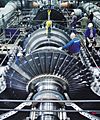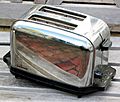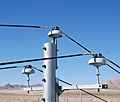Power network facts for kids
A power network is a group of people or organizations that can tell others what to do. It's like a team where some members have the ability to give orders, and others follow them.
For a power network to work, it needs to be big enough to make people listen. This often means thousands of people working together and staying in touch.
Contents
What is a Power Network?
A power network is different from a regular social group. In a social group, people connect for many reasons. In a power network, people usually connect for specific tasks or goals. Not everyone in the network has the same job or the same amount of power.
Political Parties as Power Networks
A good example of a power network is a political party. Political parties are large groups of people who work together to gain power and make decisions for a country or region. They try to convince people to vote for them and follow their ideas.
Businesses and Power Networks
Some large companies can also be seen as power networks. This happens when they rely on special agreements or rules to operate. For example, a company might have the right to drill for oil or dispose of waste. These rights give them a lot of influence.
Power Networks and Structures
When a power network becomes very strong and controls important things like infrastructure (roads, power plants, etc.), it can become a power structure. A power structure is a stable system of control.
Power in a Democracy
In a democracy, different political parties (power networks) compete in elections. They try to win votes and gain control. However, many parts of the government, like the bureaucracy (the people who run daily government tasks), often stay the same no matter who wins. These parts are also a kind of power network themselves.
See also
 In Spanish: Sistema eléctrico de potencia para niños
In Spanish: Sistema eléctrico de potencia para niños
Images for kids










